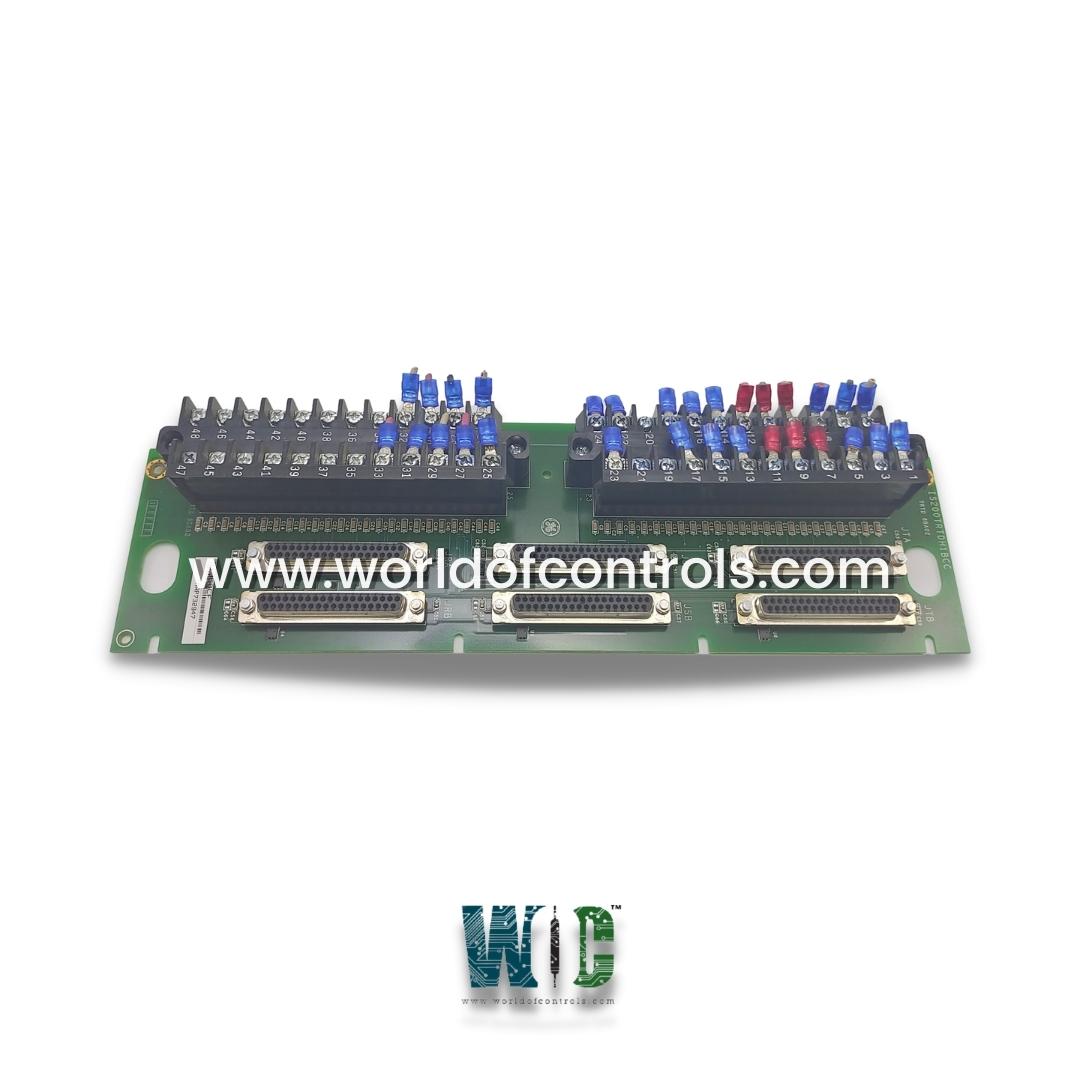SPECIFICATIONS
Part No.: IS200TRTDH1BCC
Manufacturer: General Electric
Country of Manufacture: United States of America (USA)
Size: 33.0 cm high x 17.8 cm wide
Technology: Surface mount
Temperature: -30 to 65oC
Product Type: RTD terminal board
Availability: In Stock
Series: Mark VIe
Functional Description
IS200TRTDH1BCC is a RTD terminal board developed by GE. It is a part of Mark VIe control system. The RTD Input (TRTD) terminal board is designed to accept 16 three-wire RTD (Resistance Temperature Detector) inputs. These inputs are connected to the board through two barrier-type terminal blocks, which ensure secure and reliable connections. To protect the inputs from electrical disturbances, the board includes noise suppression circuitry. This circuitry safeguards against surges and high-frequency noise, ensuring accurate and stable input signals. The terminal board interfaces with one or more I/O processors. These processors are responsible for converting the analog RTD inputs into digital temperature values. Once converted, these digital temperature readings are transmitted to the controller for further processing and monitoring.
RTD Input Configuration
- The terminal board is equipped with two barrier-type terminal blocks, facilitating the connection of 16 three-wire RTD inputs.
- This configuration enables seamless integration of multiple temperature sensors into the control system, allowing for comprehensive temperature monitoring across diverse industrial environments.
Noise Suppression Circuitry
- To ensure accurate and reliable temperature measurement, the terminal board incorporates noise suppression circuitry.
- This circuitry serves to safeguard the inputs against potential surges and high-frequency noise, minimizing the risk of signal distortion or interference. By providing a stable and clean signal environment, the TRTD board enhances the precision and integrity of temperature data acquisition.
Communication with I/O Processors
- The TRTD terminal board interfaces with one or more I/O processors, facilitating the conversion of RTD inputs into digital temperature values.
- These digital temperature values are then transferred to the controller, enabling real-time monitoring and control of temperature parameters within the industrial system.
- By leveraging efficient communication protocols, the TRTD board ensures seamless data transmission and integration with the broader control infrastructure.
Fault Detection Mechanisms
- High/Low (Hardware) Limit Check: The terminal board is equipped with a high/low hardware limit check mechanism designed to monitor temperature values against predefined thresholds. If the measured temperature exceeds or falls below the specified hardware limits, indicating a potential anomaly or malfunction, the fault detection system triggers an alarm or notification. This proactive approach helps prevent temperature fluctuations from compromising operational efficiency or safety.
- High/Low (Software) System Limit Check: In addition to hardware-based limit checks, the board implements high/low software system limit checks. These checks are performed within the software framework of the terminal board or connected controllers, continuously monitoring temperature readings and comparing them against system-defined limits. If the measured temperature deviates beyond the acceptable range, the software-based fault detection system generates alerts or initiates corrective actions to mitigate potential risks.
- Failed ID Chip Detection: ID chips uniquely identify and authenticate connected components, including RTD sensors and associated peripherals. As part of its fault detection mechanism, the terminal board monitors the status of ID chips to ensure their proper functioning. If a failure or malfunction is detected in an ID chip, indicating a potential communication error or hardware issue, the fault detection system flags the anomaly and prompts appropriate remedial measures. This proactive approach helps maintain the integrity and reliability of temperature measurement systems.
The WOC team is always available to help you with your Mark VIe requirements. For more information, please contact WOC.
Frequently Asked Questions
What is IS200TRTDH1BCC?
It is a RTD terminal board developed by GE under the Mark VIe series.
How does the board detect faults in RTD resistance?
The board regularly checks the resistance of each RTD sensor against expected values. If there's a deviation, indicating a potential issue, a fault is flagged.
How does the board handle hardware compatibility concerns?
Each connector on the board has its own ID device containing essential information. If a mismatch is detected between the board's ID and connected components, signaling hardware incompatibility, a fault is triggered.
